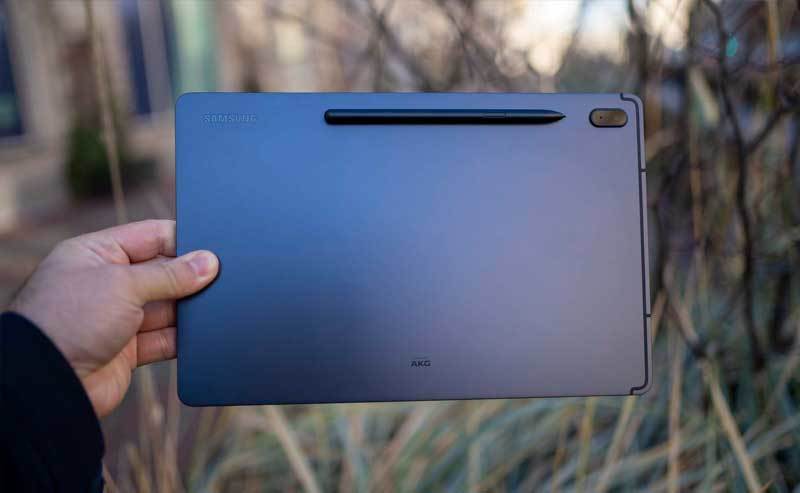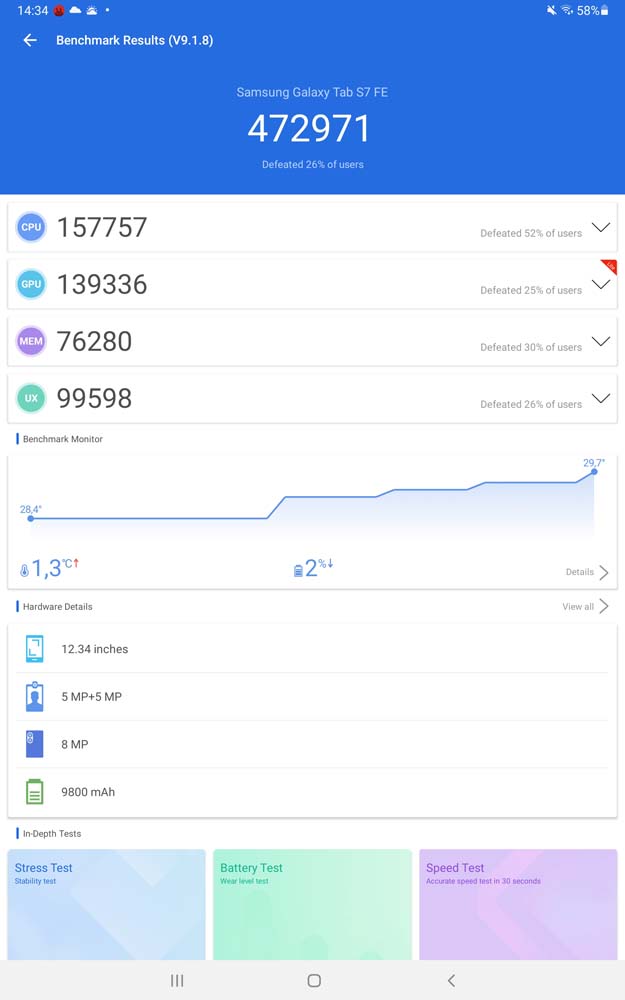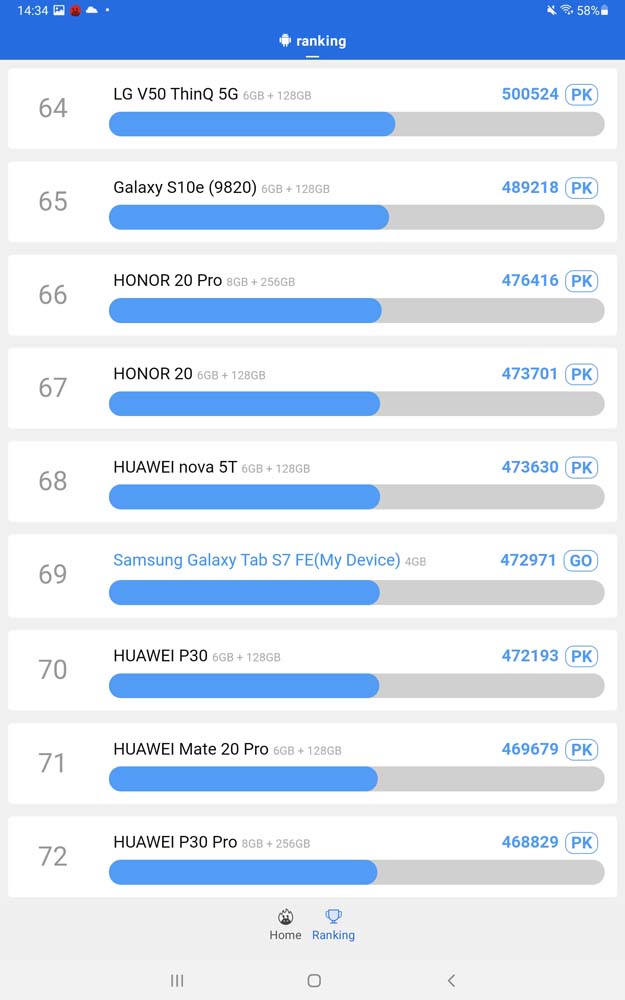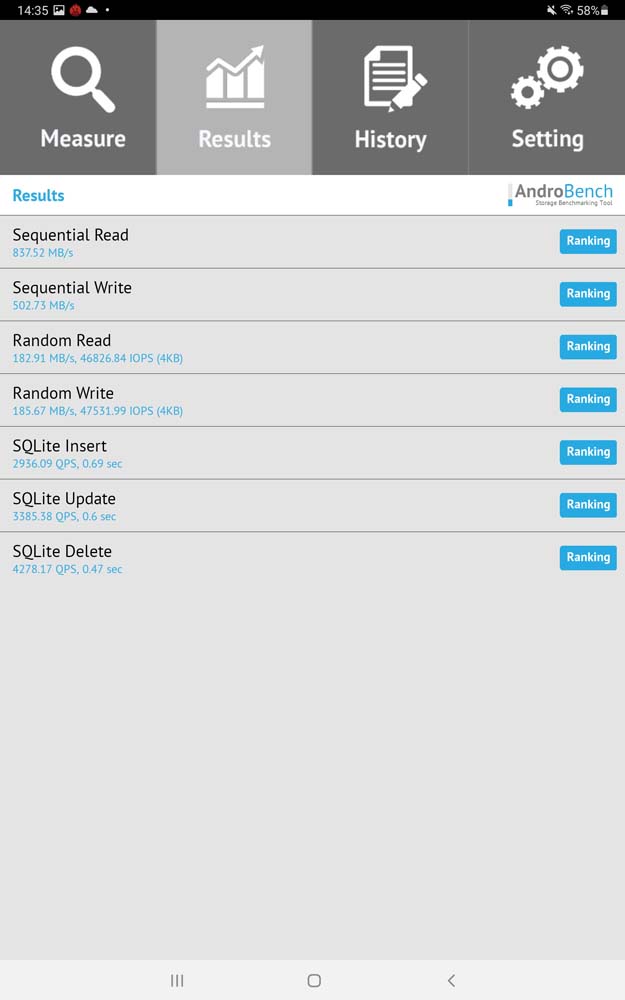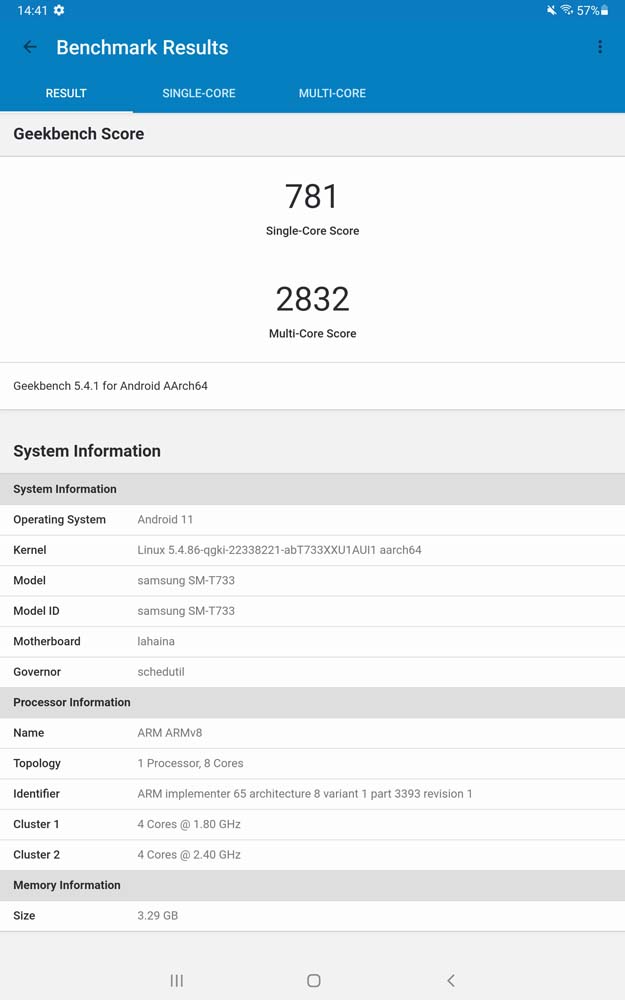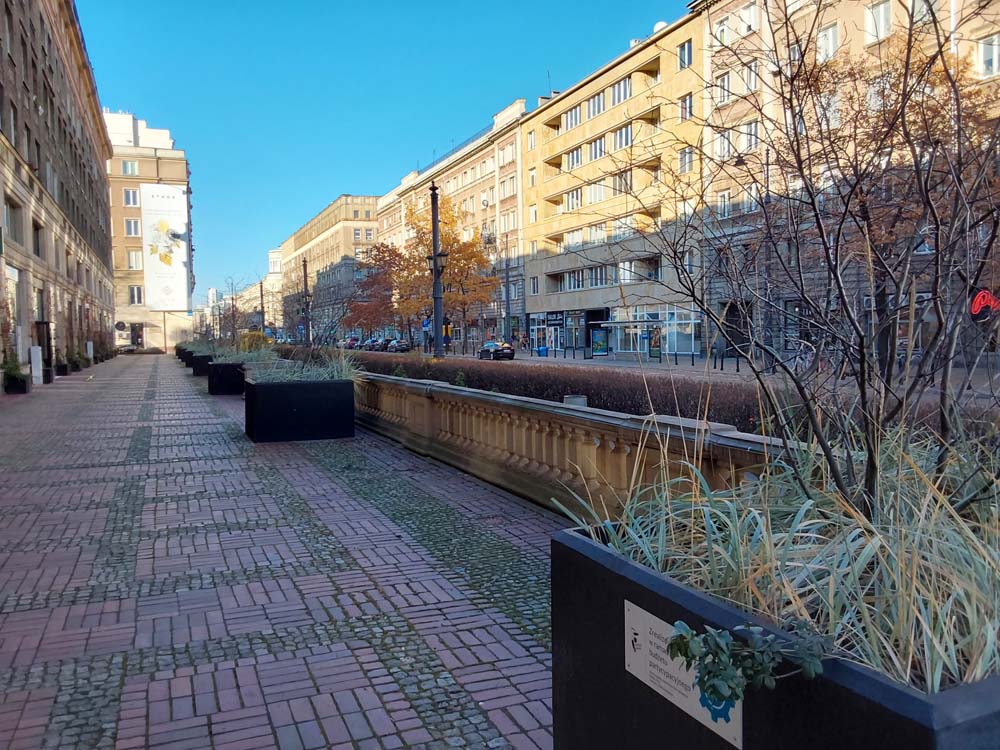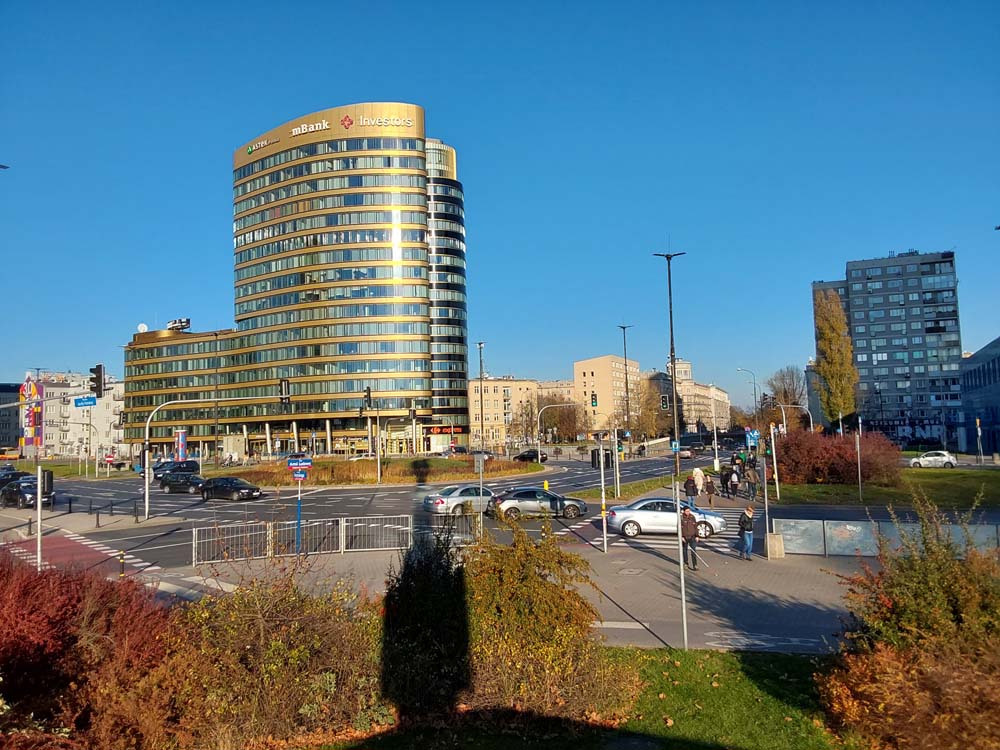After the very successful premiere of Xiaomi Tab 5 (promotional tablets sold out in less than 24 hours), we got our hands on a strong competitor from Samsung. We are talking about a cheaper flagship version with the ending “FE” – about the Samsung Galaxy Tab S7 FE. The Korean manufacturer’s proposal offers many advantages of the more expensive model – Tab S7+, but at a lower (though still quite high). The Tab S7 FE is currently the cheapest tablet with a screen over 11 inches. The tablet also supports the S Pen, which is included for free in the set. Let’s look at how the Samsung Galaxy Tab S7 FE compares to the previously reviewed, much more expensive Samsung Galaxy Tab S7+ and the hit that became the cheaper Xiaomi Pad 5.
Main advantages and disadvantages of Samsung Galaxy Tab S7 FE
Advantages of Samsung Galaxy Tab S7 FE :
- Great build quality
- Loud stereo speakers
- The front camera in the middle of the long edge
- 12.4-inch screen
- S Pen stylus support
- WiFi AX, Bluetooth 5.2, GPS, micro SD
- One UI 3.1 is refined and functional
- Stylus functions integrated into the system
- DeX mode – on a tablet and an external screen
- Good performance
- Sufficient photo quality
- Stabilized video
- Comfortable battery life
- The tablet supports charging up to 45W (fast charger not included)
Disadvantages of Samsung Galaxy Tab S7 FE :
- The speakers in the cheaper Xiaomi Pad 5 are a little better
- A 60 Hz screen is now passé
- The performance is even slightly lower than in the Xiaomi Pad 5
- No fingerprint reader
- Very basic cameras, no LED flash
- Very slow 15W charger included
- By default, the price of PLN 2,799 is too high
Design
Regarding the quality of the materials used, Samsung keeps the level of its higher models. The back of the tablet is flat and made of a single piece of metal that also forms the frame of the device. At the top, the Samsung Galaxy Tab S7 FE has a WiFi antenna integrated into the housing and a small single-camera island. It lies flat on the table and does not wobble.
On one long edge, there are magnetic contacts for connecting an optional keyboard. What Samsung did well before other tablet manufacturers was to place the front camera on the longer edge of the screen, like in a laptop. In this arrangement, during a teleconference, the camera is in the center of the tablet, standing on the desk. This is much more convenient than placing the front camera on the upper, shorter edge, like in smartphones. Conversation is also possible thanks to the use of three microphones.
Samsung Galaxy Tab S7 FE has two high-quality stereo speakers. They offer a comparable space to the quad speakers in Xiaomi Pad 5 but have less bass tones than the Chinese, cheaper tablet.
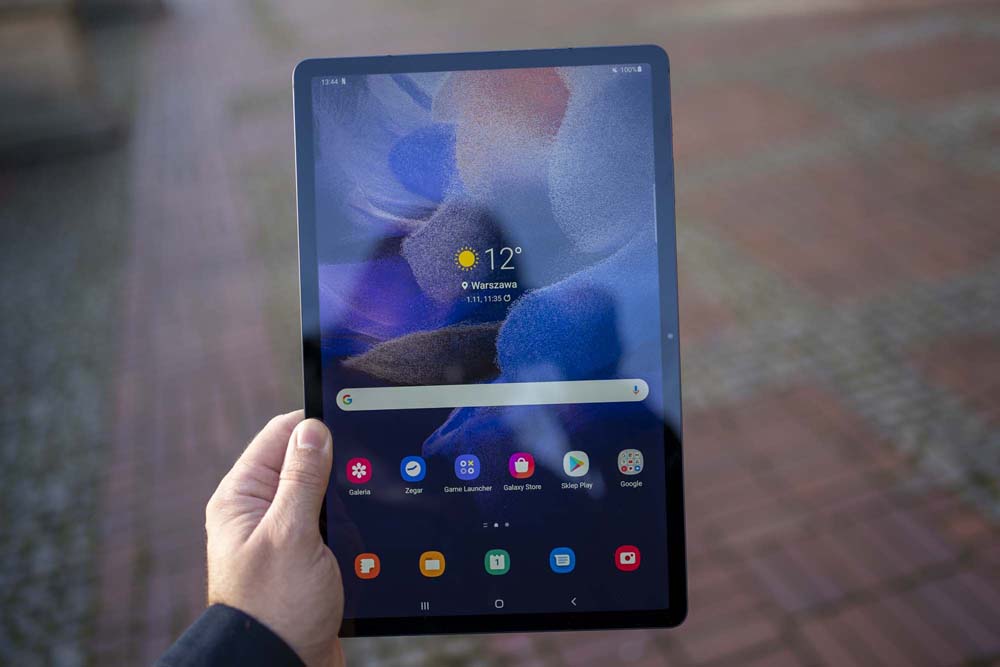
No headphone jack exists in any of the compared tablets – including the reviewed Samsung Galaxy Tab S7 FE. There is also no fingerprint reader, which can be found in the more expensive Tab S7+ model. Securing access to the tablet is only possible by face unlocking or classic password entry.
Samsung Galaxy Tab S7 FE weighs 608 grams, 33 grams heavier than the same-sized Tab S7+. It is 97 grams heavier than the Xiaomi Pad 5, which should not be surprising because Xiaomi has a smaller diagonal.
Samsung is the only major tablet manufacturer to offer the S Pen included. Unlike the more expensive model, it is not an S Pen with an active Bluetooth connection, which allows you to use the stylus as a remote control to take a photo, scroll through presentation slides, and use gestures. S Pen in Samsung Galaxy Tab S7 only works directly on the screen. As it does not require charging, there is no plastic strip on the back of the case, which allows wireless charging in the more expensive models. Finding where the stylus magnetically attaches to the case is difficult. If we put the tablet into a bag or backpack without a case, with the stylus magnetically attached to the back, we can be sure that the S Pen will detach, and we will find it at the bottom of the bag. To carry it safely, you will need a case with space for the stylus or keep it separate.

Display
The Samsung Galaxy Tab S7 FE has a 12.4-inch screen with a resolution of 2560 x 1600 pixels – 16:10. The resolution is identical to the 11-inch Xiaomi tablet and slightly lower than the more expensive Tab S7+. The pixel density is 243 PPI (266 PPI in Tab S7+ and 274 in Xiaomi Pad 5 ).
The screen is one of the elements where you can see cuts relative to the top Tab S7 + – it is not made in Super AMOLED technology, and there is no 120 Hz refresh rate, which is also offered by the Xiaomi tablet. So we have a standard TFT screen with a refresh rate of 60 Hz. Its advantage is the large diagonal – noticeably larger than 11 inches in Xiaomi and much larger than in 10-inch tablets. The image is larger when watching multimedia, giving you more space to use the stylus.
I have no objections to the image quality – it is contrasting, with vivid, saturated colors, good viewing angles, and only slightly decreasing brightness when we look at the angle. The maximum brightness is high and sufficient, also for use in sunlight. The AMOLED screen offers even better parameters, but this difference is not obvious to everyone.
In the screen settings, we will find the eye protection mode, vivid and natural color options, and that’s it. There are no advanced white balance settings and other goodies here. That’s still a better screen than most laptops. A4 PDF documents with fine print are noticeably easier to read on a 12.4-inch diagonal than on a 10-inch tablet. Compared to the 11-inch Xiaomi Pad 5, the size difference in the text is not so noticeable, but when scrolling and scanning text with your eyes, the 120 Hz in the Pad 5 turns out to be helpful and less tiring for your eyes.
Specification and operating system
Samsung Galaxy Tab S7 FE has an octa-core Snapdragon 778G processor clocked at 4 x 2.4 GHz + 4 x 1.8 GHz. The tablet version with 4 GB RAM and 64 GB of built-in memory was tested, but a richer 6/128 GB version is available in Polish stores. The tablet supports micro SD memory cards with up to 1 TB capacity. A 5G version is also available, but we tested the WiFi-only version.
Benchmark results:
- Antutu 9 – 472971
- Geekbench 5 – 781/2832
- Androbench sequential read/write – 837/502 MB/s
Samsung Galaxy Tab S7 FE equals Xiaomi Pad 5 in the Geekbench benchmark and loses in Antutu, and also significantly loses compared to Xiaomi in memory reading speed. We can conclude from this that the higher price of the Samsung tablet is reflected in various features of the tablet, but not in its performance because it is ultimately at a similar level to the Xiaomi tablet, which costs PLN 1,100 less.

From the point of view of the tablet’s capabilities, such performance is sufficient for comfortable use – watching multimedia, using demanding applications, or playing mobile games. There is little justification for targeting higher models solely for performance reasons.
The Samsung Galaxy Tab S7 FE communication package includes the latest WiFi AX (sixth generation), Bluetooth 5.2, and USB C with controller version 3.2. As in other tablets, we will not find NFC here, but we can choose a more expensive version with 5G.
The location uses GPS, GLONASS, BDS, and GALILEO protocols. The sensor set includes an accelerometer, gyroscope, light intensity sensor, and digital compass. The technical advantage over the Xiaomi Pad 5 tablet comes down to the support of memory cards, the newer generation of WiFi and Bluetooth, and GPS, which Xiaomi does not have.
Samsung Galaxy Tab S7 FE runs on Android 11 with One UI 3.1.1. Security updates are updated through November 1, 2021.
Two things make the Samsung tablet stand out: support for the S Pen stylus and DeX mode. The S Pen does not require charging, detects the pressure effortlessly and accurately, and is in a class of its own regarding quality. Wacom, known for its graphic tablets, is responsible for the technology. In addition to drawing, signing documents, and taking handwritten notes, system functions allow you to display the translation of words indicated with the stylus, take screenshots as a fragment, and extract text from any part of the screen or application. Even though it is not an active stylus of the latest generation, it still fulfills its function perfectly.
DeX, in turn, allows you to switch the tablet interface, optimized for touch, to one more reminiscent of a desktop system – with a bottom bar, application menu, and programs opening in windows of any size. This is conducive to more productive work at the desk after connecting the keyboard and mouse. In the case of the Samsung Galaxy Tab S7 FE, just like in the more expensive Tab S7+ model, DeX mode can be launched directly on the tablet using the shortcut bar or by connecting an external monitor. When we connect a monitor, we can use two independent screens – control music on the tablet, view the messenger, and work with a text editor or e-mail client on the monitor. Xiaomi Pad 5 tablet, unfortunately, does not allow you to connect an external screen with a cable at all.
Other features include integration with the Samsung ecosystem – receiving SMS and calls from the phone on the tablet, as long as we also have a Samsung phone. The ability to record the screen, Game Launcher, or the sidebar of shortcuts sliding out from the edge. In terms of software capabilities, Samsung has the most to offer.
Camera
In addition to the screen compared to the more expensive Tab S7 +, the FE model also differs in a simpler camera. There is no additional ultra-wide-angle camera, no 4K video recording and the remaining cameras have a lower resolution – 8 instead of 13 megapixels on the back and 5 instead of 8 megapixels on the front. As a result, what we get is:
- 8-megapixel main camera with autofocus, recording FHD video in 30 frames
- A 5-megapixel front camera, also recording FHD video
Samsung does not even provide the brightness of the lenses used. There is also no LED lighting, which can be found in both the expensive Tab S7+ and the cheaper Xiaomi Pad 5. For example, this can make it difficult to take a photo of a document when we have no other light source.
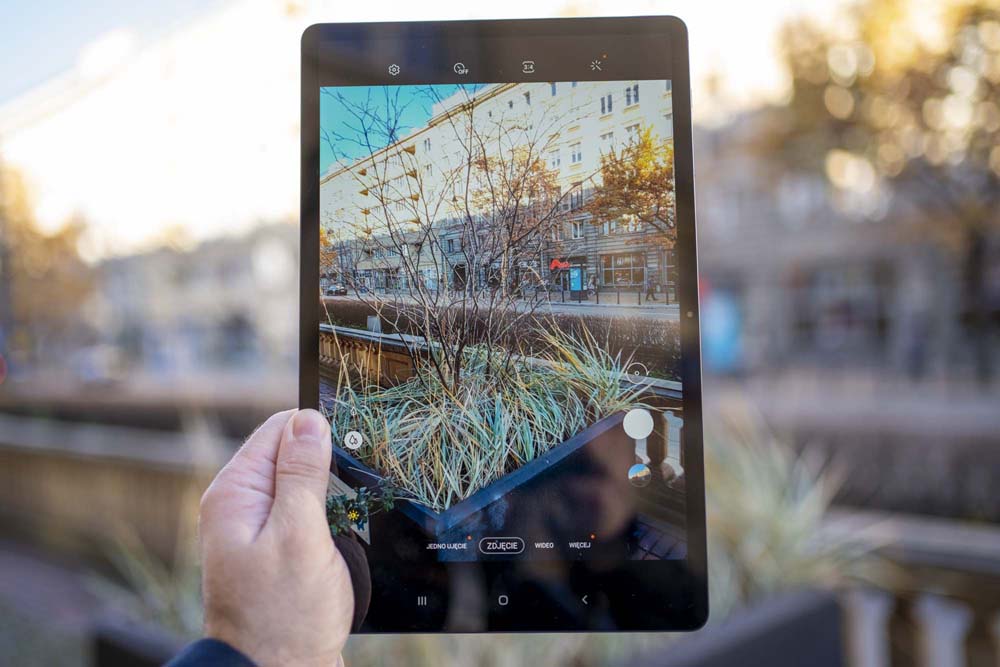
The application includes the following modes: photo, video, one shot, Ar Doodle, Pro, Panorama, Food, Night, Portrait Mode, Hyperlapse, AR Zone, and Bixby Vision.
Considering how simplified the camera is, its effects are surprisingly good. First, Samsung has refined colors up its sleeve – the photos are saturated and attractive, and the white balance is well selected. Even night photos are quite good because they are motionless and with the right amount of HDR. 1080p video, although far less detailed than 4K, is well digitally stabilized and adequately detailed. Although not as good as in its more expensive and older brother, the front camera is sufficient for teleconferencing. No one should try to replace the phone’s camera with a 12-inch tablet, but if necessary, the Samsung Galaxy Tab S7 FE will work.
Sample pictures:
Battery
Samsung Galaxy Tab S7 FE has a 10090 mAh battery. In the set with the device, we get a standard 15W charger, although, like the Tab S7+, the tablet supports charging up to 45W if we buy an optional charger separately. Unfortunately, we cannot count on fast charging in the case of the factory set, and here the Xiaomi tablet does a little better.
In a YouTube video playback test with the screen brightness set to half, the tablet discharged 5% after 12 hours and 15 minutes. This is a good result for comfort, but the Tab S7+ with an OLED screen lasted at least an hour longer, and the Xiaomi tablet up to 6 hours longer.
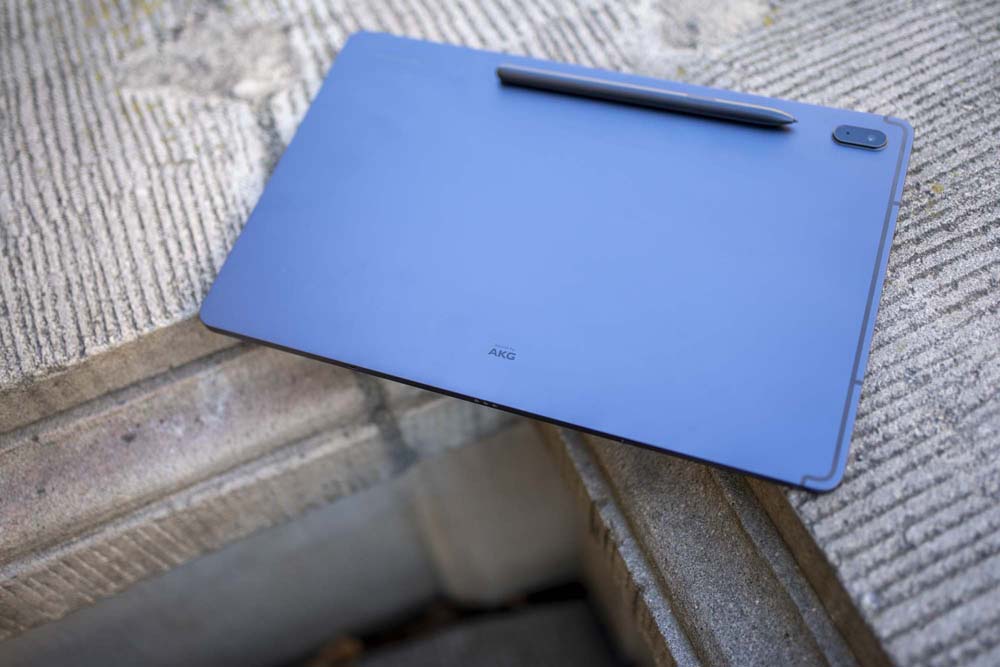
Conclusion
You can expect high-quality hardware from Samsung, and the Samsung Galaxy Tab S7 FE is no different. There is a metal casing, good stereo speakers, refined One UI 3.1 overlay software, DeX mode on the tablet and external monitor, and excellent stylus support. There are also features that Xiaomi Pad 5 lacks, such as a WiFi ax, support for memory cards or GPS, and the ability to connect an external screen via cable. A 12.4-inch screen is also a rare option for less than PLN 3,500. Although the battery and camera do not stand out from other offers, they are of good quality.
The question of competitiveness becomes more complex when comparing the Samsung tablet with the Xiaomi Pad 5 tablet. The Xiaomi tablet offers superior performance, featuring a 120 Hz screen, four speakers with richer sound quality, higher-resolution cameras capable of 4K video recording, and an LED flash. Notably, there have been promotional offers where the Samsung tablet was available at a reduced rate compared to its regular price. At this discounted rate, the price gap between the Samsung and Xiaomi tablets narrows significantly, even falling below the standalone cost of the stylus for the Xiaomi tablet. Moreover, the Samsung tablet includes a stylus and offers additional features such as a larger screen and DeX support. Therefore, I would recommend the Samsung tablet at a reduced price, particularly for those seeking a larger screen, stylus functionality, and DeX support. However, the original price appears relatively high, especially considering that the Tab S7 can sometimes be found at a similar rate.
We love: S Pen on a 12.4-inch screen
We don’t like: slow charger included
Who is the Samsung Galaxy Tab S7 FE for :
- For people who want to use the S Pen stylus
- For those looking for the largest screen possible
- For people using DeX mode
- For users of the Samsung ecosystem
Who is not the Samsung Galaxy Tab S7 FE for :
- Not for people looking for a 120Hz screen
- Not for those who want more than 2 speakers and an OLED screen
- Not for those looking for a good price-to-equipment ratio outside of the promotion
